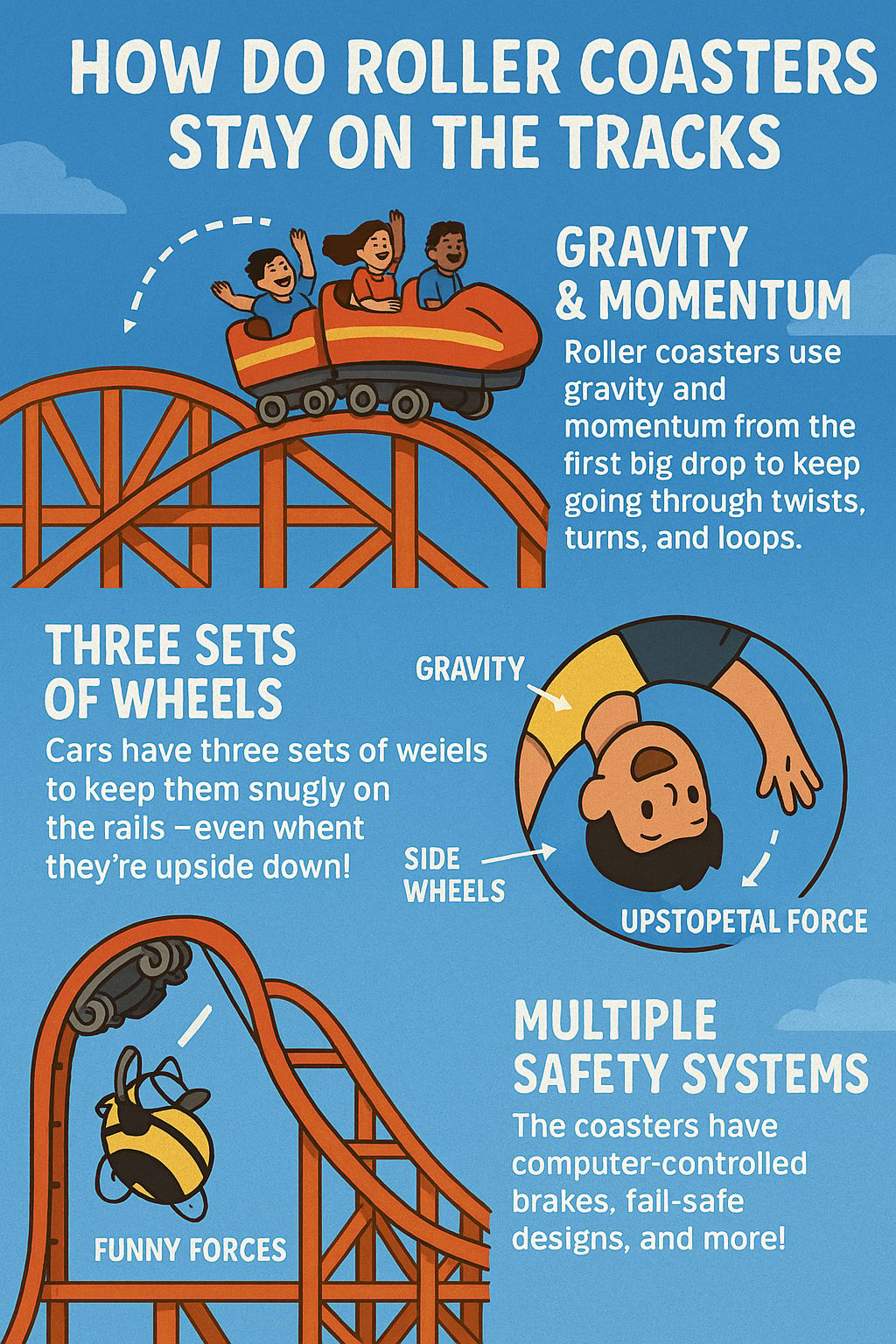You’re strapped into a seat.
You climb higher… higher…
And suddenly — SWOOSH! — you’re racing down, spinning sideways, maybe even going upside down.
But here’s the question:
How do roller coasters not fly off the tracks?!
Let’s unravel the thrilling science behind one of the world’s most heart-pounding inventions 🎢

🎢 The Basics: It's Not Magic. It's Physics.
Roller coasters aren’t powered by engines the whole time. In fact, most of the ride runs on gravity and momentum — the same forces that make a ball roll down a hill.
A chain pulls the train up the first big hill
At the top, the train has potential energy (like a coiled spring!)
When it drops, that energy turns into kinetic energy — or motion
The rest of the ride uses the speed from that first drop to keep going
But what keeps the coaster on the tracks, especially during wild turns and upside-down loops?
🛞 The Wheels Do All the Work
Every roller coaster car actually has three sets of wheels:
Running wheels – sit on top of the track and carry the weight
Side wheels – press against the sides of the rail and keep the train centered
Upstop wheels – roll underneath the track to keep the car from lifting off
Yes, you read that right: the coaster is clamped to the track from above, the sides, AND below. Even if you're upside down in a loop, it's locked in place.
That’s how it stays on track, no matter how fast or twisty it gets.
🔄 Loops & Twists: Why Don’t You Fall Out?
When the coaster goes upside down, you stay in your seat thanks to inertia and centripetal force:
Inertia keeps your body moving in the direction the car is going
Centripetal force pulls you toward the center of the loop (and keeps you pinned to your seat)
As long as the coaster is going fast enough, those forces push you into your seat — not out of it.
Your safety harness? It’s backup.
🧯 Safety Systems: Built Like Fortresses
Roller coasters are incredibly safe, thanks to:
Computer-controlled brakes and launch systems
Fail-safe designs (if one system fails, another takes over)
Daily inspections by engineers
Precise track calculations using advanced physics and modeling
Every twist, drop, and loop is tested again and again to make sure it’s smooth, safe, and scream-worthy.
🧠 What We Can Learn
Thrilling doesn’t mean unsafe — with the right design, excitement can be engineered
Science and fun go hand in hand (especially at 100 km/h!)
Even the most extreme rides rely on very down-to-earth physics
So next time you're flying through a loop with your hands in the air, remember:
You're not just having fun — you're riding on the power of gravity, math, and really smart wheels.